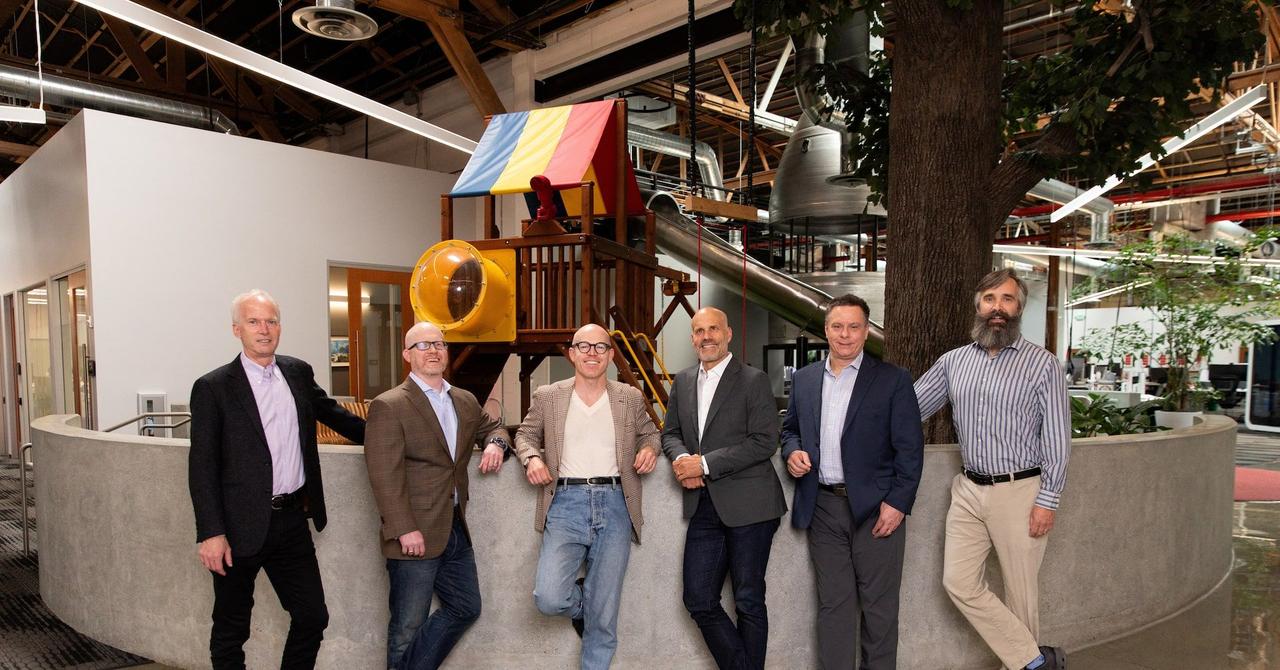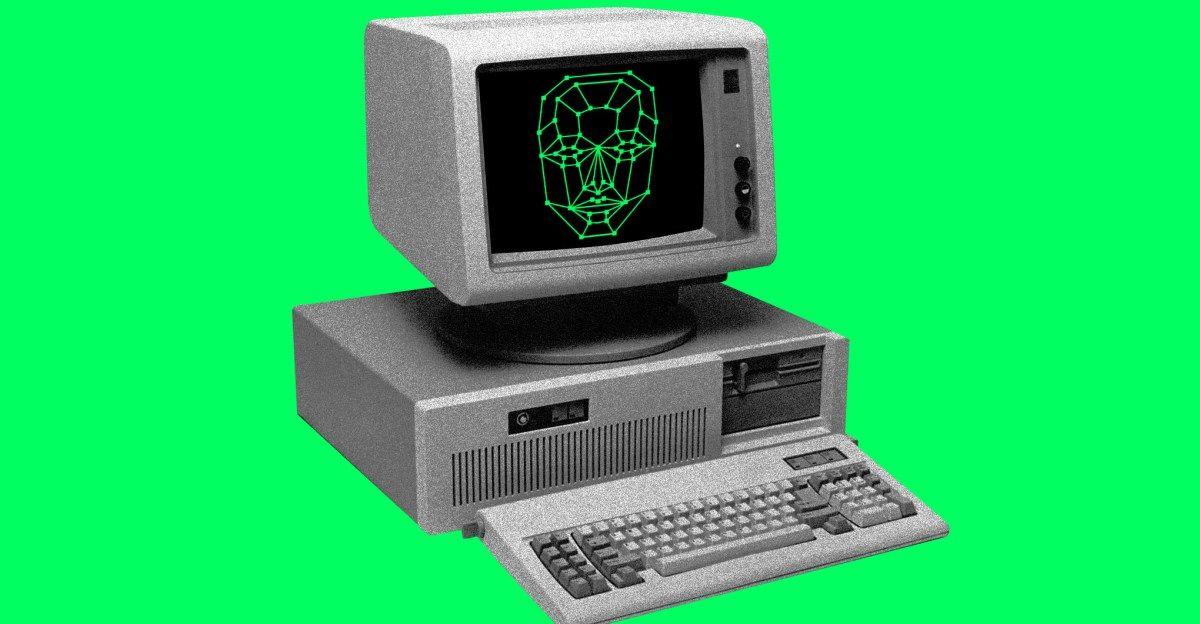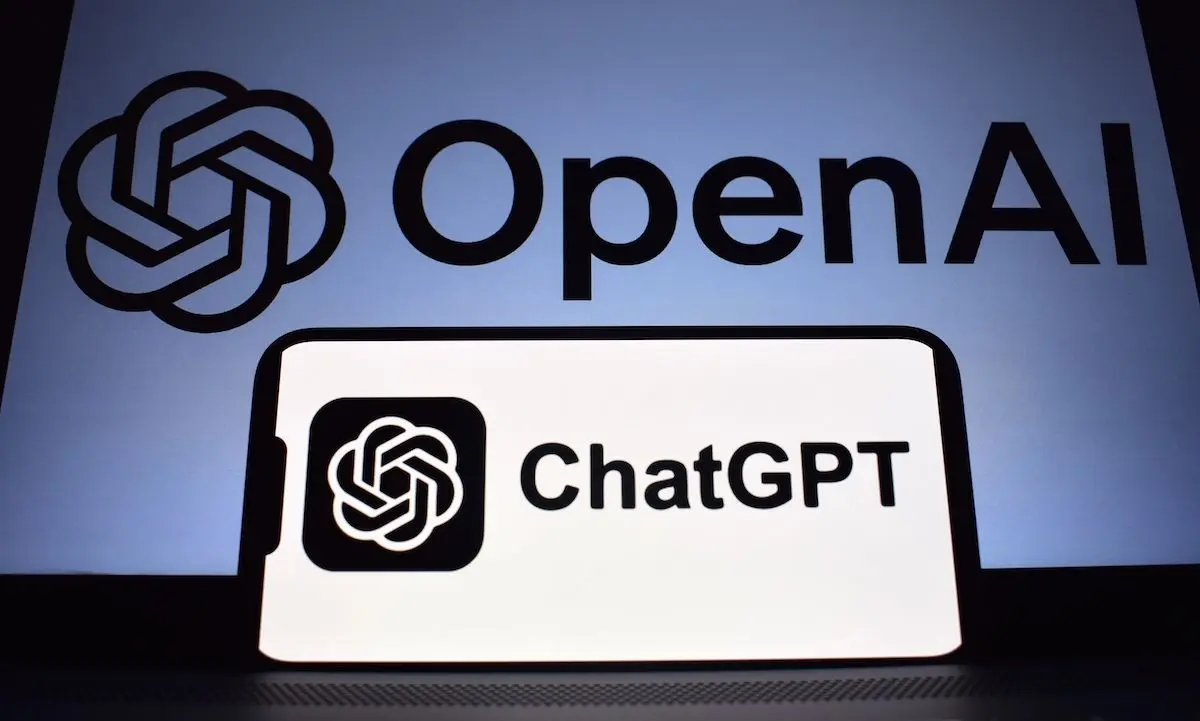Silicon Valley Startup xLight Raises $40 Million to Develop Advanced Chip-Making Laser Technology
4 Sources
4 Sources
[1]
US startup xLight raises $40 million in race against China for key chip-making laser
PALO ALTO, California, July 22 (Reuters) - Silicon Valley startup xLight has raised $40 million, aiming to build the first prototype of a new class of laser that could shake up the global chip industry and reclaim U.S. leadership in a field that China is aggressively investing in. XLight's laser - based on the same technologies as massive particle accelerators used by U.S. national labs in cutting-edge physics research - will sit at the heart of what are known as extreme ultraviolet (EUV) lithography machines. EUV machines are the tools primarily responsible for the creation of smaller, faster chips. In a world where advances in fields such as AI are determined by how many chips Nvidia (NVDA.O), opens new tab and other chip companies can supply, xLight is aiming to help chip factories, called "fabs" in the industry, turn out more of the dinner-plate-sized silicon "wafers" that contain advanced chips more quickly and cheaply. "This is the most expensive tool in the fab. It's what drives the cost of the wafer more than any other tool in the fab, and it's what drives capacity more than any other tool in the fab," Nicholas Kelez, CEO of xLight, said at the company's Palo Alto headquarters. XLight declined to disclose its valuation. It expects to have an operational prototype in 2028. 'TERRIBLE MISTAKE' The EUV machines themselves took the chip industry decades to develop, and Europe's ASML (ASML.AS), opens new tab is currently the world's only supplier. ASML and xLight do not have a business partnership, but technical leaders at ASML have provided xLight with the requirements a laser must meet to be considered for use in ASML's machines. The U.S. government has worked across multiple presidential administrations to stop EUV machines from being sent to China, with one official calling it the "single most important export control" held by the U.S. and Europe. China has responded by pouring resources into the field, with a close manufacturing partner of national champion Huawei Technologies (HWT.UL) claiming breakthroughs in developing its own EUV laser and more than a dozen research papers appearing at international conferences chasing the same technological path as xLight. A U.S.-based firm named Cymer perfected the first EUV laser technology and was scooped up by ASML more than a decade ago for $2.5 billion, helping create ASML's dominant position in the market. "There was a terrible mistake made giving Cymer the ability to become a European-owned and controlled company," said Pat Gelsinger, former CEO of Intel (INTC.O), opens new tab who now serves as executive chairman of xLight's board and is a general partner at Playground Global, one of xLight's investors. Many of xLight's prototype components will come from U.S. national labs as xLight works to build a supply chain in the U.S. and allied countries. "We can build that here, or it can be built elsewhere. China is investing heavily in this space. There's an extraordinary backstory here that says, 'Let's get this one right,'" Gelsinger said. The financing round was led by Playground Global and joined by Boardman Bay Capital Management. Morpheus Ventures, Marvel Capital, and IAG Capital Partners also joined the round. (This July 22 story has been corrected to clarify that xLight and ASML do not have a formal business partnership, in paragraph 7) Reporting by Stephen Nellis in Palo Alto, California; Editing by Sayantani Ghosh, Muralikumar Anantharaman and Marguerita Choy Our Standards: The Thomson Reuters Trust Principles., opens new tab
[2]
US startup xLight raises $40 million in race against China for key chipmaking laser
PALO ALTO, California, July 22 (Reuters) - Silicon Valley startup xLight has raised $40 million, aiming to build the first prototype of a new class of laser that could shake up the global chip industry and reclaim U.S. leadership in a field that China is aggressively investing in. XLight's laser - based on the same technologies as massive particle accelerators used by U.S. national labs in cutting-edge physics research - will sit at the heart of what are known as extreme ultraviolet (EUV) lithography machines. EUV machines are the tools primarily responsible for the creation of smaller, faster chips. In a world where advances in fields such as AI are determined by how many chips Nvidia (NVDA.O), opens new tab and other chip companies can supply, xLight is aiming to help chip factories, called "fabs" in the industry, turn out more of the dinner-plate-sized silicon "wafers" that contain advanced chips more quickly and cheaply. "This is the most expensive tool in the fab. It's what drives the cost of the wafer more than any other tool in the fab, and it's what drives capacity more than any other tool in the fab," Nicholas Kelez, CEO of xLight, said at the company's Palo Alto headquarters. XLight declined to disclose its valuation or precisely when the prototype will be launched. 'TERRIBLE MISTAKE' The EUV machines themselves took the chip industry decades to develop, and Europe's ASML (ASML.AS), opens new tab, which xLight is partnering with on its prototype, is currently the world's only supplier. The U.S. government has worked across multiple presidential administrations to stop EUV machines from being sent to China, with one official calling it the "single most important export control" held by the U.S. and Europe. China has responded by pouring resources into the field, with a close manufacturing partner of national champion Huawei Technologies (HWT.UL) claiming breakthroughs in developing its own EUV laser and more than a dozen research papers appearing at international conferences chasing the same technological path as xLight. A U.S.-based firm named Cymer perfected the first EUV laser technology and was scooped up by ASML more than a decade ago for $2.5 billion, helping create ASML's dominant position in the market. "There was a terrible mistake made giving Cymer the ability to become a European-owned and controlled company," said Pat Gelsinger, former CEO of Intel (INTC.O), opens new tab who now serves as executive chairman of xLight's board and is a general partner at Playground Global, one of xLight's investors. Many of xLight's prototype components will come from U.S. national labs as xLight works to build a supply chain in the U.S. and allied countries. "We can build that here, or it can be built elsewhere. China is investing heavily in this space. There's an extraordinary backstory here that says, 'Let's get this one right,'" Gelsinger said. The financing round was led by Playground Global and joined by Boardman Bay Capital Management. Morpheus Ventures, Marvel Capital, and IAG Capital Partners also joined the round. Reporting by Stephen Nellis in Palo Alto, California; Editing by Sayantani Ghosh and Muralikumar Anantharaman Our Standards: The Thomson Reuters Trust Principles., opens new tab
[3]
US startup xLight raises $40 million in race against China for key chipmaking laser - The Economic Times
Silicon Valley startup xLight has raised $40 million, aiming to build the first prototype of a new class of laser that could shake up the global chip industry and reclaim U.S. leadership in a field that China is aggressively investing in. XLight's laser - based on the same technologies as massive particle accelerators used by U.S. national labs in cutting-edge physics research - will sit at the heart of what are known as extreme ultraviolet (EUV) lithography machines. EUV machines are the tools primarily responsible for the creation of smaller, faster chips. In a world where advances in fields such as AI are determined by how many chips Nvidia and other chip companies can supply, xLight is aiming to help chip factories, called "fabs" in the industry, turn out more of the dinner-plate-sized silicon "wafers" that contain advanced chips more quickly and cheaply. "This is the most expensive tool in the fab. It's what drives the cost of the wafer more than any other tool in the fab, and it's what drives capacity more than any other tool in the fab," Nicholas Kelez, CEO of xLight, said at the company's Palo Alto headquarters. XLight declined to disclose its valuation or precisely when the prototype will be launched. Terrible mistake The EUV machines themselves took the chip industry decades to develop, and Europe's ASML, which xLight is partnering with on its prototype, is currently the world's only supplier. The U.S. government has worked across multiple presidential administrations to stop EUV machines from being sent to China, with one official calling it the "single most important export control" held by the U.S. and Europe. China has responded by pouring resources into the field, with a close manufacturing partner of national champion Huawei Technologies claiming breakthroughs in developing its own EUV laser and more than a dozen research papers appearing at international conferences chasing the same technological path as xLight. A US-based firm named Cymer perfected the first EUV laser technology and was scooped up by ASML more than a decade ago for $2.5 billion, helping create ASML's dominant position in the market. "There was a terrible mistake made giving Cymer the ability to become a European-owned and controlled company," said Pat Gelsinger, former CEO of Intel who now serves as executive chairman of xLight's board and is a general partner at Playground Global, one of xLight's investors. Many of xLight's prototype components will come from U.S. national labs as xLight works to build a supply chain in the U.S. and allied countries. "We can build that here, or it can be built elsewhere. China is investing heavily in this space. There's an extraordinary backstory here that says, 'Let's get this one right,'" Gelsinger said. The financing round was led by Playground Global and joined by Boardman Bay Capital Management. Morpheus Ventures, Marvel Capital, and IAG Capital Partners also joined the round.
[4]
US startup xLight raises $40 million in race against China for key chip-making laser
(Corrects July 22 story to reflect that xLight and ASML do not have a formal business partnership in paragraph 7) PALO ALTO, California (Reuters) -Silicon Valley startup xLight has raised $40 million, aiming to build the first prototype of a new class of laser that could shake up the global chip industry and reclaim U.S. leadership in a field that China is aggressively investing in. XLight's laser - based on the same technologies as massive particle accelerators used by U.S. national labs in cutting-edge physics research - will sit at the heart of what are known as extreme ultraviolet (EUV) lithography machines. EUV machines are the tools primarily responsible for the creation of smaller, faster chips. In a world where advances in fields such as AI are determined by how many chips Nvidia and other chip companies can supply, xLight is aiming to help chip factories, called "fabs" in the industry, turn out more of the dinner-plate-sized silicon "wafers" that contain advanced chips more quickly and cheaply. "This is the most expensive tool in the fab. It's what drives the cost of the wafer more than any other tool in the fab, and it's what drives capacity more than any other tool in the fab," Nicholas Kelez, CEO of xLight, said at the company's Palo Alto headquarters. XLight declined to disclose its valuation. It expects to have an operational prototype in 2028. 'TERRIBLE MISTAKE' The EUV machines themselves took the chip industry decades to develop, and Europe's ASML is currently the world's only supplier. ASML and xLight do not have a business partnership, but technical leaders at ASML have provided xLight with the requirements a laser must meet to be considered for use in ASML's machines. The U.S. government has worked across multiple presidential administrations to stop EUV machines from being sent to China, with one official calling it the "single most important export control" held by the U.S. and Europe. China has responded by pouring resources into the field, with a close manufacturing partner of national champion Huawei Technologies claiming breakthroughs in developing its own EUV laser and more than a dozen research papers appearing at international conferences chasing the same technological path as xLight. A U.S.-based firm named Cymer perfected the first EUV laser technology and was scooped up by ASML more than a decade ago for $2.5 billion, helping create ASML's dominant position in the market. "There was a terrible mistake made giving Cymer the ability to become a European-owned and controlled company," said Pat Gelsinger, former CEO of Intel who now serves as executive chairman of xLight's board and is a general partner at Playground Global, one of xLight's investors. Many of xLight's prototype components will come from U.S. national labs as xLight works to build a supply chain in the U.S. and allied countries. "We can build that here, or it can be built elsewhere. China is investing heavily in this space. There's an extraordinary backstory here that says, 'Let's get this one right,'" Gelsinger said. The financing round was led by Playground Global and joined by Boardman Bay Capital Management. Morpheus Ventures, Marvel Capital, and IAG Capital Partners also joined the round. (Reporting by Stephen Nellis in Palo Alto, California; Editing by Sayantani Ghosh, Muralikumar Anantharaman and Marguerita Choy)
Share
Share
Copy Link
xLight, a Silicon Valley startup, has secured $40 million in funding to develop a new class of laser for extreme ultraviolet (EUV) lithography machines, aiming to revolutionize chip manufacturing and compete with China's aggressive investments in the field.
Silicon Valley Startup Secures $40 Million for Advanced Chip-Making Laser
Silicon Valley startup xLight has raised $40 million in a bid to develop a groundbreaking laser technology that could potentially revolutionize the global chip industry. The company aims to build the first prototype of a new class of laser for extreme ultraviolet (EUV) lithography machines, which are crucial for creating smaller and faster chips
1
.
Source: ET
Innovative Technology and Its Potential Impact
xLight's laser technology is based on the same principles used in massive particle accelerators found in U.S. national labs for cutting-edge physics research. This innovative approach could significantly enhance the capabilities of EUV lithography machines, which are currently the primary tools responsible for manufacturing advanced semiconductor chips
1
2
.Nicholas Kelez, CEO of xLight, emphasized the importance of this technology, stating, "This is the most expensive tool in the fab. It's what drives the cost of the wafer more than any other tool in the fab, and it's what drives capacity more than any other tool in the fab"
1
. The company aims to help chip factories, or "fabs," produce more of the dinner-plate-sized silicon wafers containing advanced chips more quickly and cost-effectively.Global Competition and Strategic Implications
The development of this technology is taking place against a backdrop of intense global competition, particularly with China. The U.S. government has been working across multiple administrations to prevent EUV machines from being exported to China, considering it a critical export control measure
1
3
.In response, China has been investing heavily in this field. A close manufacturing partner of Huawei Technologies has claimed breakthroughs in developing its own EUV laser, and numerous research papers from China have been presented at international conferences, pursuing similar technological paths as xLight
1
4
.Related Stories
Industry Partnerships and Future Prospects

Source: Reuters
While xLight and ASML, the world's only supplier of EUV machines, do not have a formal business partnership, technical leaders at ASML have provided xLight with the requirements a laser must meet to be considered for use in ASML's machines
4
. xLight expects to have an operational prototype by 20281
.Pat Gelsinger, former CEO of Intel and current executive chairman of xLight's board, highlighted the strategic importance of developing this technology domestically. He referred to the acquisition of Cymer, a U.S.-based firm that pioneered EUV laser technology, by ASML as a "terrible mistake," emphasizing the need to maintain U.S. leadership in this critical field
1
3
.Funding and Supply Chain Development
The $40 million financing round was led by Playground Global, with participation from Boardman Bay Capital Management, Morpheus Ventures, Marvel Capital, and IAG Capital Partners
1
2
. xLight is working to build a supply chain in the U.S. and allied countries, with many of its prototype components sourced from U.S. national labs1
.As the global semiconductor industry continues to evolve, xLight's development of advanced laser technology for chip manufacturing represents a significant step in the ongoing race for technological supremacy between the United States and China.
References
Summarized by
Navi
Related Stories
Xscape Photonics Secures $44M to Revolutionize Data Center Connectivity with Silicon Photonics
16 Oct 2024•Technology

China builds EUV prototype to rival the West in AI chips, targeting semiconductor independence by 2030
17 Dec 2025•Technology

Photonic Startups Attract Major Investments as AI Data Centers Seek Efficiency Boost
16 Oct 2024•Technology








